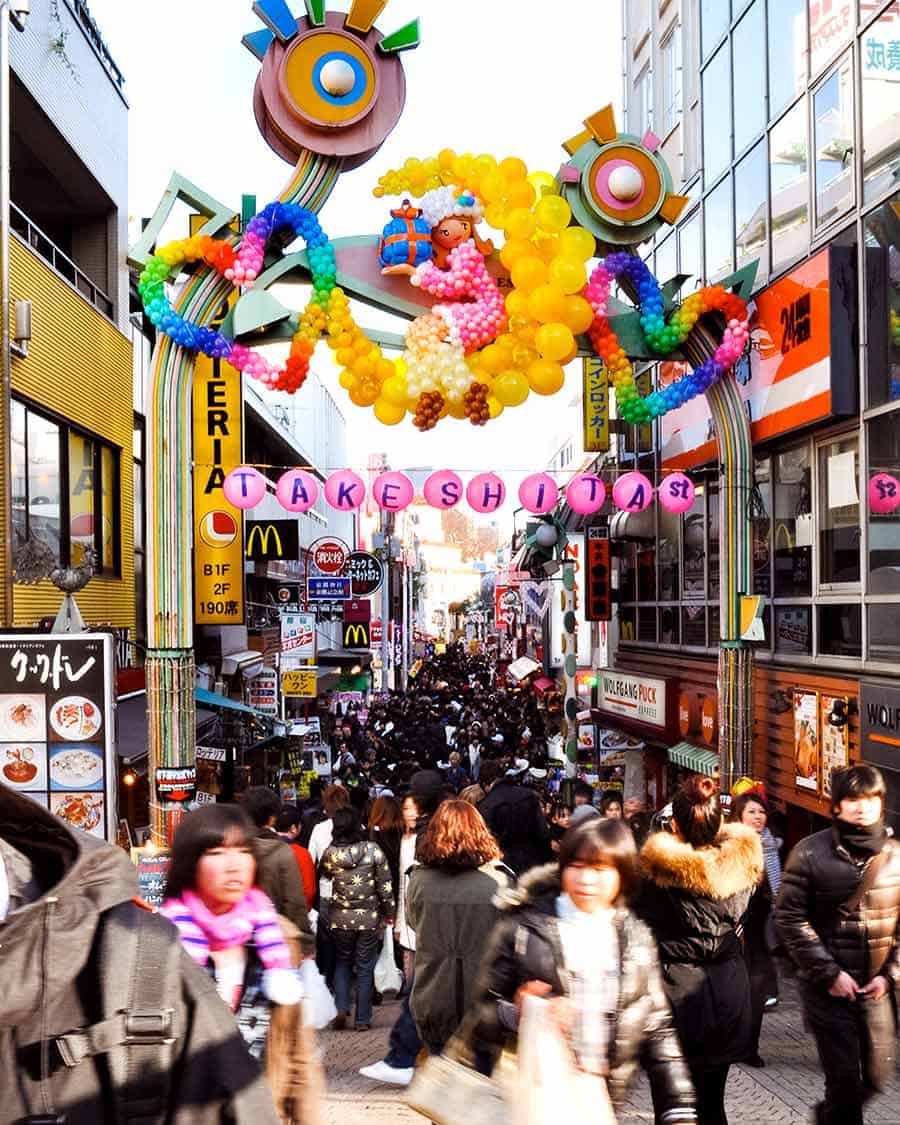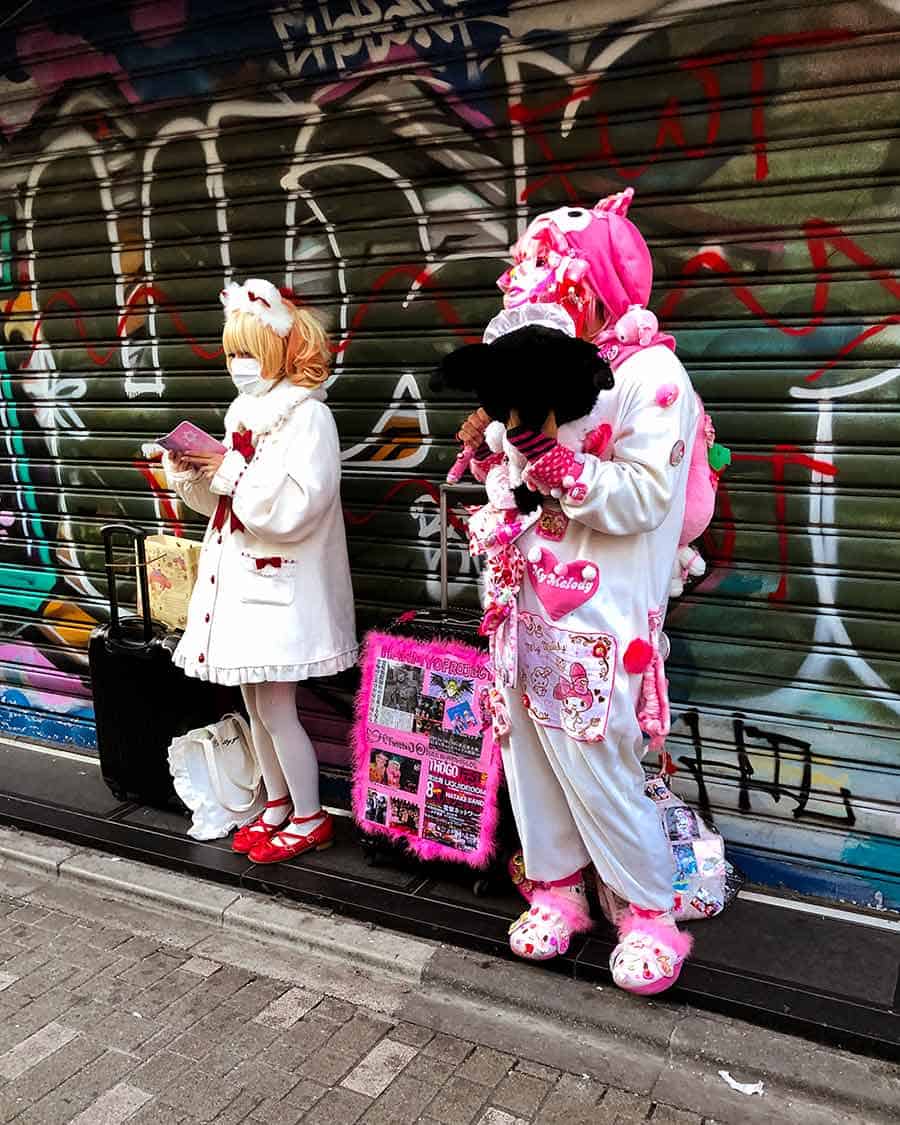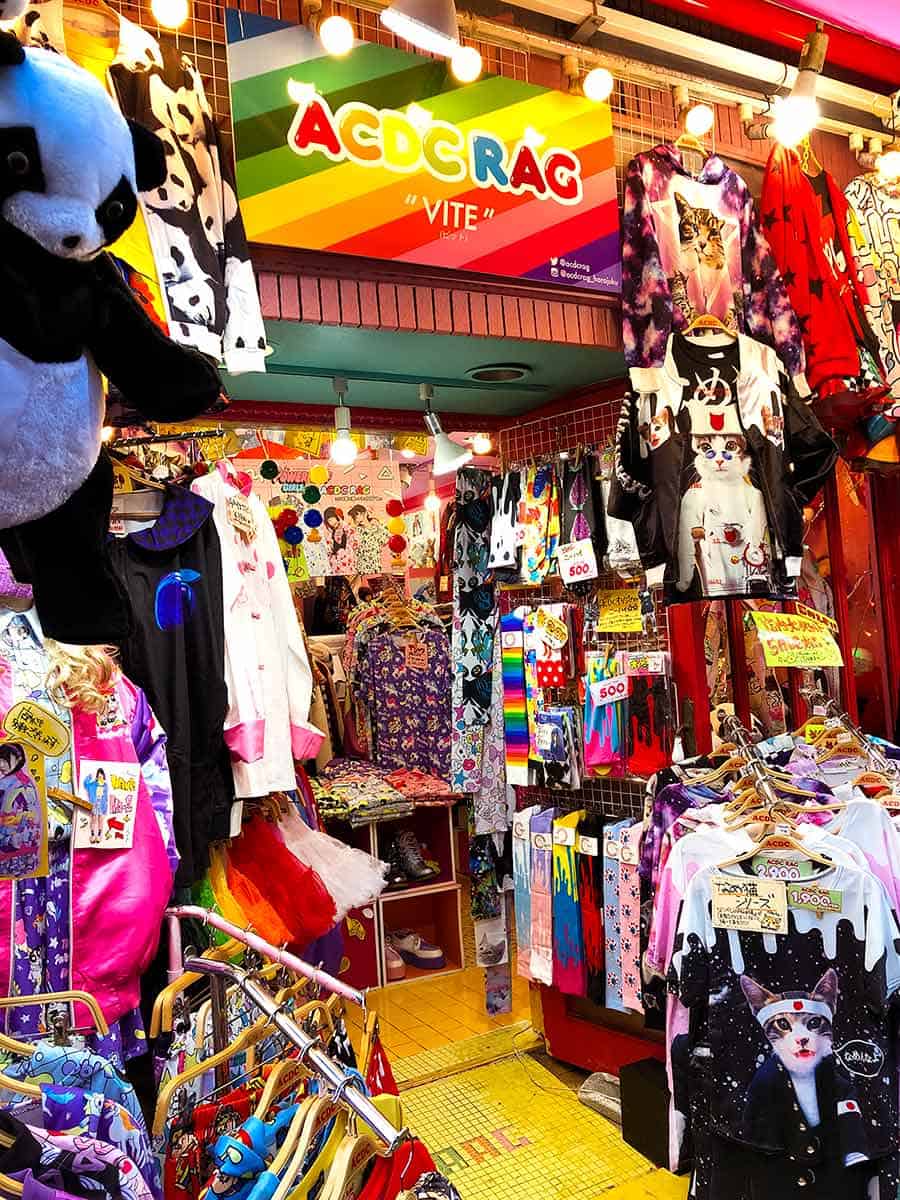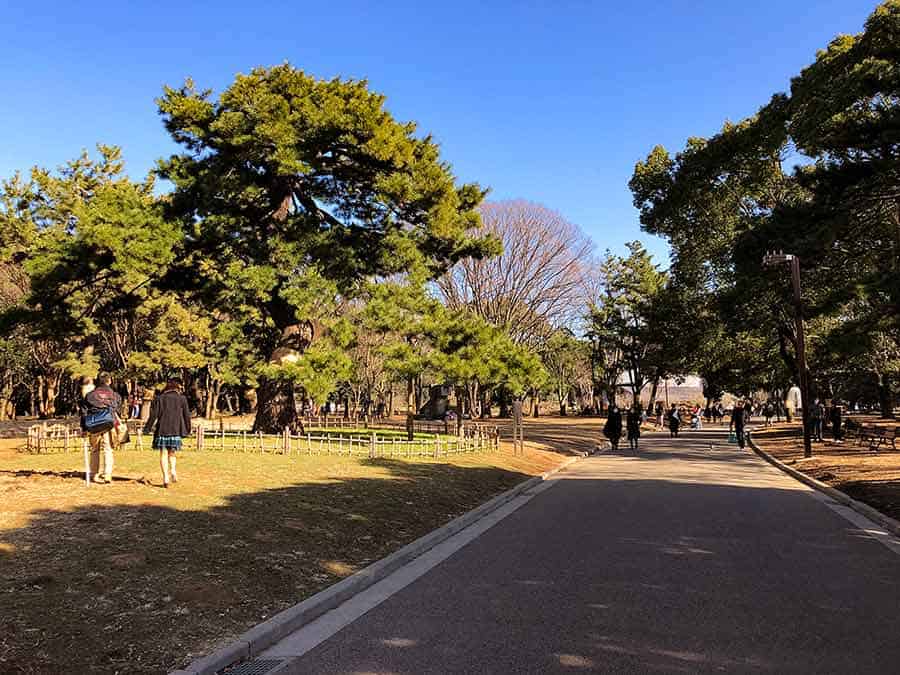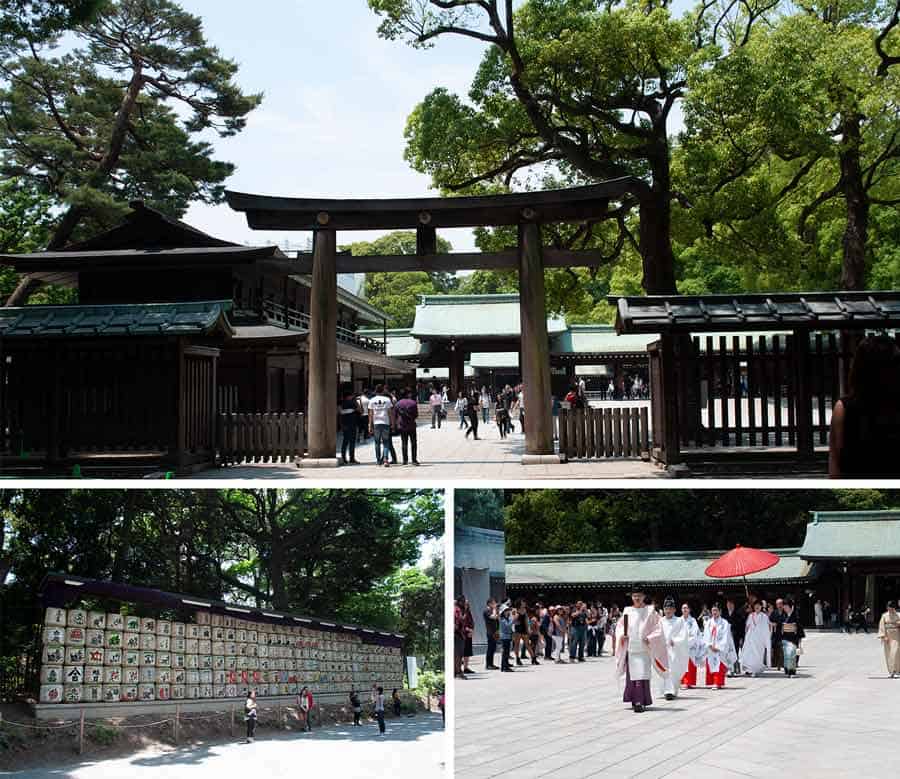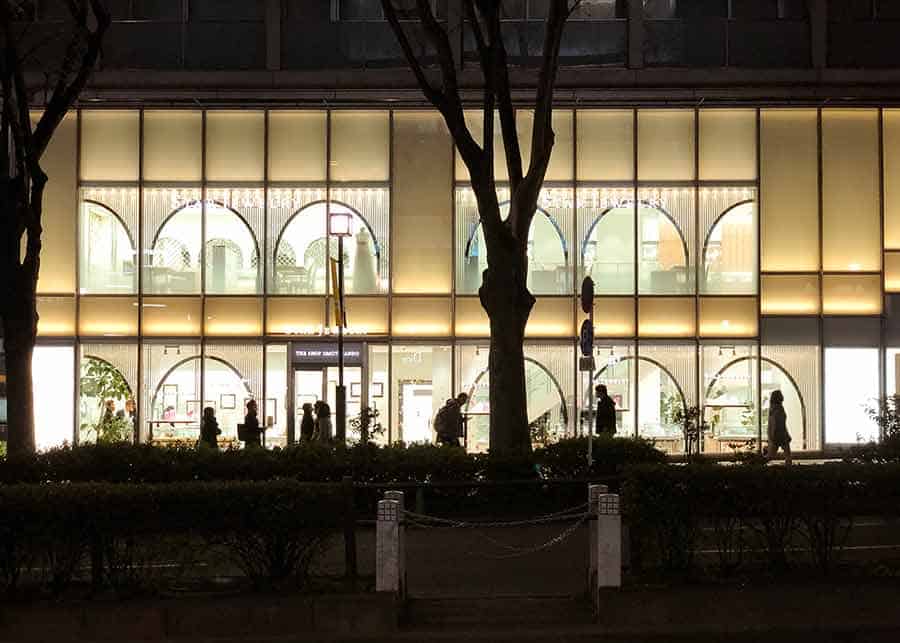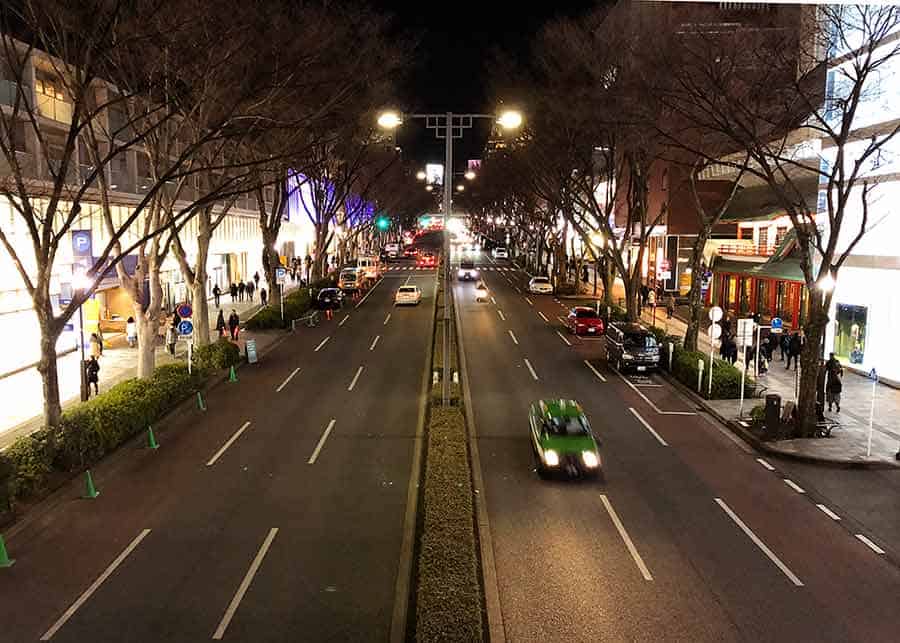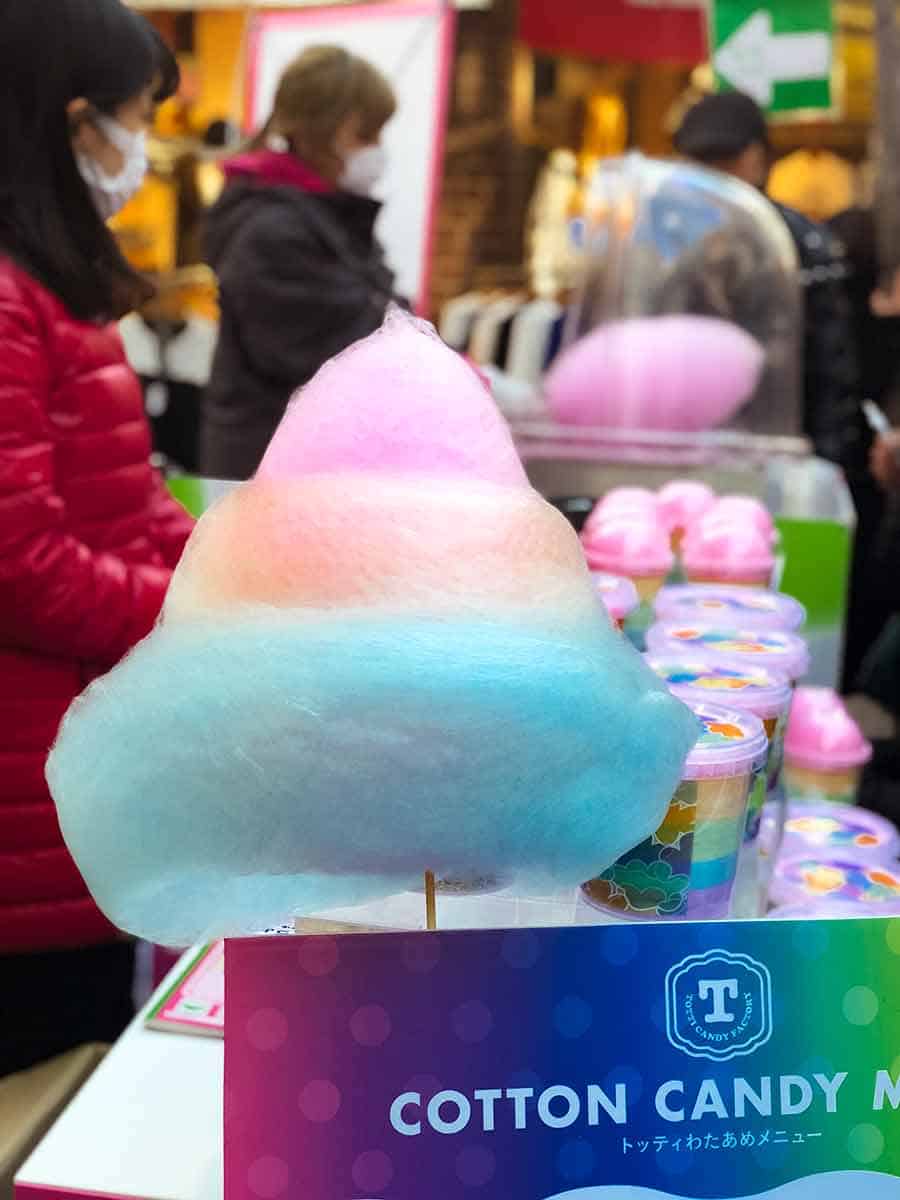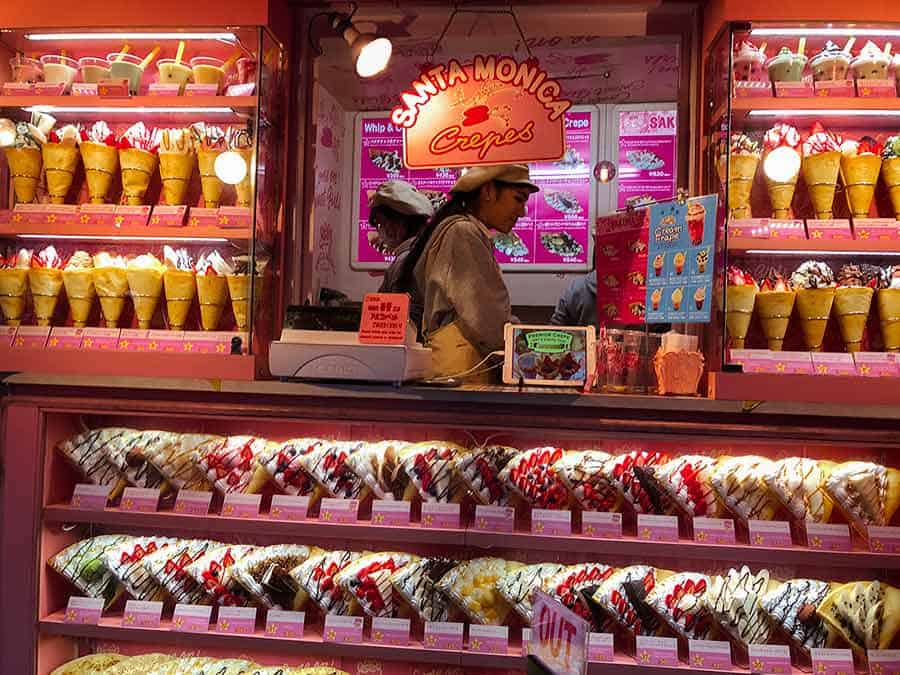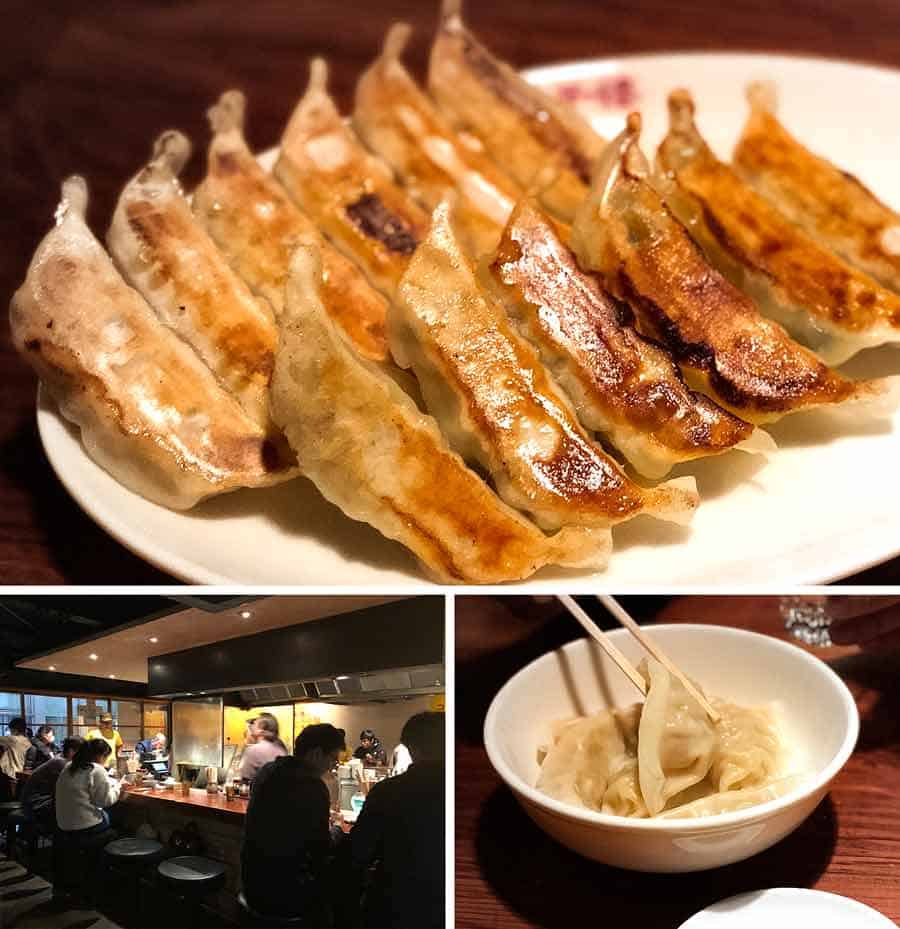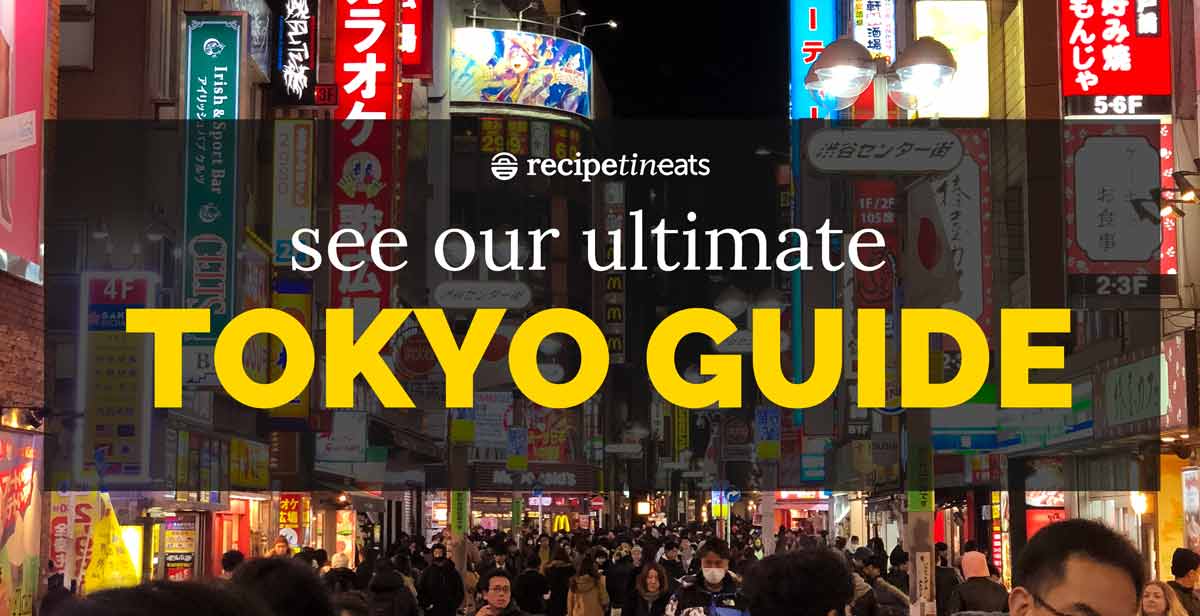Harajuku is most famous for being the playground of the alternative youth of Tokyo! Takeshita Street is the centre of this weird little universe, where you can see Harajuku girls dressed in kawaii and cosplay outfits, boggle at bizarre fashion, browse quirky shops, eat crazy snack creations and get swept up in the weekend crowds swarming down the strip. This is the crazy side of Japan that’s a must-see! But there’s plenty more than just crazy teen culture to explore in this and its neighbouring areas. Read on for more!
Harajuku
Just north of Shibuya lies Harajuku and its adjacent areas, where a range of wildly differing cultural aspects of Japan and Japanese people in a relatively compact area. Let’s get the most obvious of these out of the way. Harajuku’s most well known attraction is Takeshita Street (Takeshita dori), a narrow street where the zaniest of Tokyo’s teens come to shop, play and be seen. Away from Takeshita Street though reveals a more grown-up side to the area. Just a few streets away from Takeshita Street is the expensive neighbourhood of Omotesando where haute couture retail and art attract the stylish, the cultured and the wealthy. Yoyogi Park is a popular park on the other side of Harajuku Station, lively with strollers and weekend revellers, especially the famous for the Rockabilly Dancers. Directly adjacent to Yoyogi Park are the grounds of the venerable Meiji Shrine, a Shinto shrine dedicated to one of Japan’s most important emperors. See below for more information on each of the above!
What to do in Harajuku
Takeshita Street
When people think of ultra-wacky Japanese teenage fashion and pop culture, they are probably thinking of Harajuku Takeshita Street (Takeshita dori). This is arguably the epicenter of Harajuku, a narrow street crammed with fast food shops, cafes, clothes retailers, quirky shops and WTF moments. It’s also crammed with people and on weekends especially Takeshita Dori is extremely crowded, which only seems to add to the slightly mad atmosphere of the place. How to get there: The start of Takeshita Street is right outside Harajuku Station – you won’t miss it, just follow the crowds! When to go: Sunday for maximum crowds and teenagers in kawaii outfits. Midweek for a quieter experience!
Yoyogi Park
Immediately to the west of Harajuku over the JR rail line is Yoyogi Park (Yoyogi koen). The park is large but fairly unremarkable but popular with visitors and also long associated with its people-watching and happenings. The park has long been a magnet for interesting characters, performances and random events. One notable group who has been doing their thing for many years at Yoyogi Park are the rockabilly dancers. Sporting patched jackets, leather boots, slicked hair and maybe 30 years on the clock too many to be really doing this, every Sunday these older groovers twist to 1950’s rock in front of bemused crowds. How to get there: Just 50m from Harajuku station, about 150m from Takeshita street. See map below. When to go: Sunday – to watch the rockabilly dancers!
Meiji Shrine
North of Yoyogi Park is Meiji Shrine (Meiji Jingu), one of Tokyo’s most famous and important shrines. The shrine was built in 1920 in honour of Emperor Meiji and his wife. Meiji reigned during the late 19th Century until his death in 1912, and under his rule Japan underwent a key transformation from an isolated feudal state to a modern, industrialised world power influenced by the West. He is considered a key figure in Japanese history, and without him there would have been no conveyor belt sushi, no Pokemon and no Japanese cars to compare other makers to on reliability measures. The shrine complex itself is located deep within the shrine grounds, and to reach it you walk a long path through a leafy forest, passing under two large mon (gates). A few minutes walk north of the main shrine is the Meiji Jingu Treasure House (or Treasure Museum). Here are displayed various personal belongings of the Emperor and the Empress. How to get there: 500m from Harajuku Station, see map below. (Note you cannot reach Meiji Jingu from inside Yoyogi Park, and must go out the entrance again)
Omotesando
Omotesando runs south-east from the main intersection at Harajuku station and is a leafy, long boulevard lined with flashy global designer brands stores, buildings showcasing impressive contemporary architecture, as well as a smattering of cafes, restaurants and art galleries. Snaking off either side of Omotesando are a maze of small streets and alleys. These hide myriad interesting shops and boutiques, as well as restaurants and stores that are worth perusing, especially less mainstream and high street than the main road. This part of Harajuku – Omotesando and nearby Aoyoma at the east end of the boulevard – caters to a mature and sophisticated crowd. It’s one of the wealthiest areas of Tokyo, home to many people with more money than you and I – quite a stark comparison to the teeny-bopper street party vibes of the nearby Takeshita Street! How to get there: The start of the strip is about 300m from Harajuku Station. There is also a station – Omotesando Station – at the other end of the strip so you can walk from down Omotesando to Harajuku then make your way to your next destination.
Harajuku Food
While there’s a huge range of food options in Harajuku (like anywhere in Tokyo), we think of Harajuku food as mainly novelty food, intended to appeal to the youth that hang there. Think:
Fully loaded colourful crepes Monster ice cream cones Giant fairy floss Wild coloured bubble teas Colourful candies and cute sweets
Gyoza Restaurant in Harajuku
But one place we can recommend is Harajuku Gyozarou which is a gyoza restaurant. You’ll find Harajuku Gyozarou in a number of guidebooks and online guides. The gyoza (Chinese-style pork and cabbage dumplings) are tasty, cheap and pair well with drinks after a long day of walking and gawking the area. We recommend the pan-fried variety – steamed gyoza just aren’t the same without the crispy bottoms! Aside from gyoza there is a small selection of other Chinese dishes also available. Queues are the norm but the line moves fairly quickly. Harajuku Gyozarou Address: 6 Chome-2-4 Jingumae, Shibuya-ku, Tokyo (Map). Phone: +81 3 3406 4743 Open: 11:30-04:30 daily (Sun LO 22:00) Tabelog page
How to get to Harajuku
You can get to Harajuku on the train using either of these lines:
JR Yamanote Line to Harajuku station; or Tokyo Metro Chiyoda Line to Meiji-jingu Mae (5 minutes walk to Harajuku)
JR Harakjuku station is only 1 station away from Shibuya on the JR Yamanote Line. You could also walk from Shibuya to Harajuku station and to Yoyogi Park – about 15 minutes. Read the Tokyo Trains section in the Tokyo Travel Guide for information on travelling on trains, and how to figure out which trains to catch where!
Harajuku Area Map
See below for how to use this map.
How to use this map
By restaurant name – Click the icon on the top left to reveal our list of recommended restaurants in this area (see above for more information on each restaurant). Then click on the restaurant for more information about that restaurant as well as highlighting the marker on the map. Zoom in and out by clicking the + and – on the bottom left. Large view – Click the icon on the top right to open a new tab to view the map in full screen. Click a marker on the map to reveal more information about the restaurant.
See our Tokyo Guide!
Born in Japan, raised in Australia, Sydney is our hometown, but Tokyo is our playground. This Tokyo Travel Guide is a culmination of a lifetime of travelling to Tokyo, condensed into one place!!
Asakusa / Shinjuku / Shibuya / Harajuku / Tokyo Station / Imperial Palace / Ginza / Ueno / Akihabara
